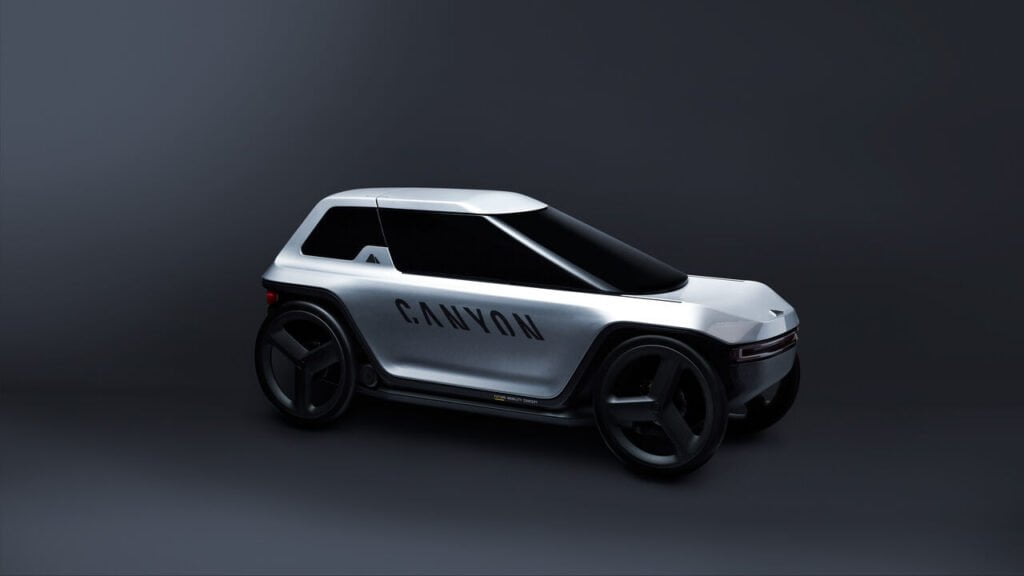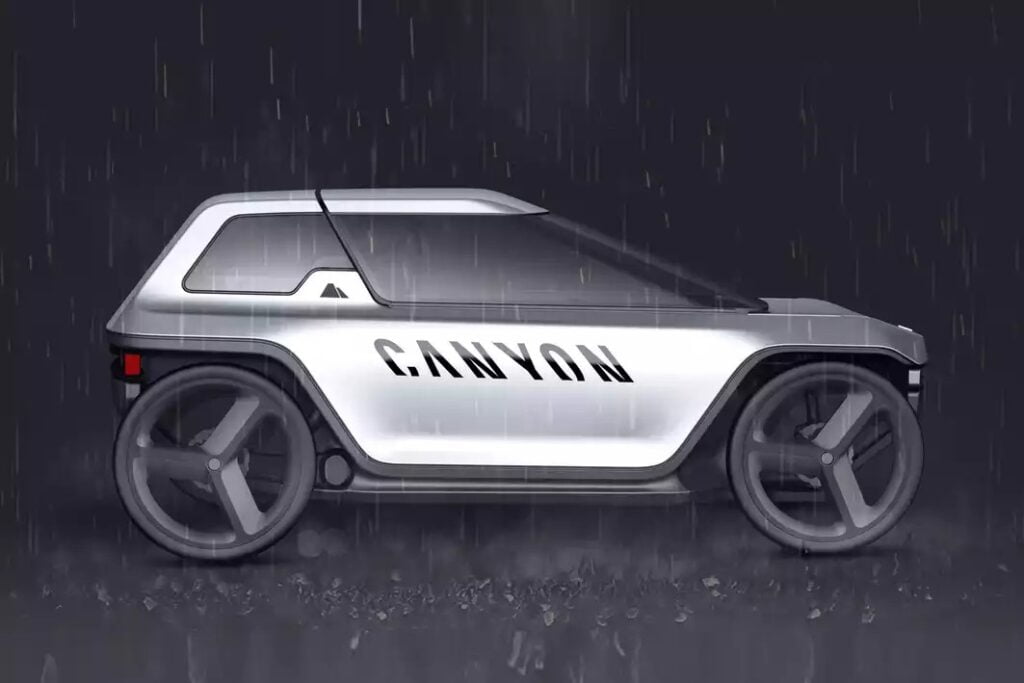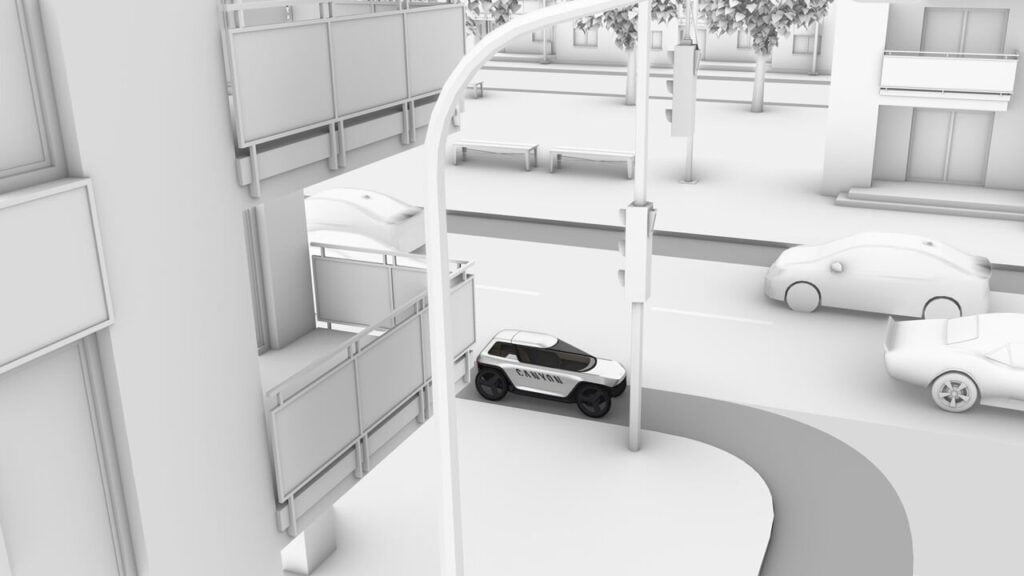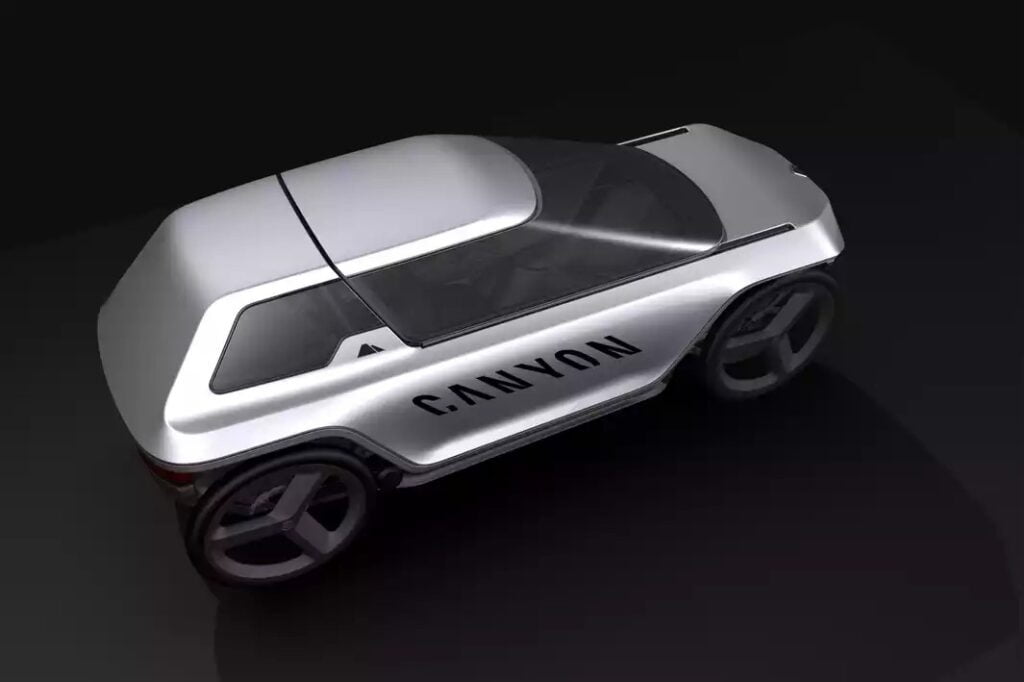Electric bicycles are growing in popularity. The mobility bonus has given a further boost to an already growing trend. You can see it for yourself on the streets: passengers and motorcyclists have an alternative option to private cars to get around the city and get to work.
It goes without saying that even in the rest of the world (indeed, more so) the "cycling movement" is growing out of all proportion, giving strength to many designers to create new vehicles, including the one developed by Canyon. “This Future Mobility Concept, part car, part electric recumbent bicycle, has been on the notebook of one of our designers for a long time. The coronavirus was the catalyst for trying new ideas,” he says Jack Noy of Canyon. “It's an opportunity to see what is really possible to change in the way we travel in our cities.”
With its Future Mobility Concept, Canyon has presented a bold vision for urban travel of the future. It has four wheels and not two, so technically it is not a bicycle. It looks more like a powered electric recumbent bike that would allow cyclists to move seamlessly between road and cycling infrastructure.

45% of potential ebike cyclists wants a means of transport protected from the elements.
Future Mobility Concept: dressing up as a car or a bike depending on the road
Canyon sees it as a dual-classification vehicle. With electric assistance limited to 25 km/h if used within cycling infrastructures, as per legislation in force in Europe and Australia , and with the possibility of going up to 60 km / h if used on the road. (but you need a driving license and insurance, as things stand).
Bridging the gap between ebike and car, our Future Mobility Concept represents a revolutionary alternative to both the car and the bicycle
Canyon press release
Combining the next generation of lightweight and powerful ebikes with four-wheel stability and storm-proof weather protection, the Future Mobility Concept represents a decisive step in reimagining how bicycle technology can regain space on the roads. It's a clean vehicle, a statement and a sign of what's to come.

How is the Future Mobility Concept made?
The German brand has built a prototype 83 cm wide (not much wider than an electric bike) and 110 cm high (compact enough to limit its load on narrow city roads already clogged with cars).
Designed to seamlessly jump from road to bike path, this low-emission vehicle combines the best parts of electric cars and bikes. It is fast and stable enough to fly along the open road, yet light and agile enough to glide on the bike path.
The viewing pod protects the rider from the elements and has a sliding roof to provide access and ventilation, if you're missing that wind-in-your-hair feeling you get while riding a bike. The capsule also features windshield wipers, heating to reduce fogging, front and rear lights, a seat belt and front shock absorbers. Starting and opening the Future Mobility Concept are both manual and remote, via smartphone.

It's inside?
Quite simply, it feels like a very small car, and that's by design. Canyon believes that for alternative transportation solutions to become standardized, they must visually and practically attract a market that otherwise has little intention of pedaling anywhere.
There is no steering wheel, but it is steered via two joysticks on both sides of the cab. The turning radius is seven meters. There isn't even a driveshaft: power is measured through the front pedals and electronically transmitted to the rear, avoiding unnecessary parts that could add weight, take up too much space and wear out over time.
Space? Reduced, as it is easy to imagine. Less than a Twizy: an adult in front and a child in the back (or a piece of luggage).

The performances
As mentioned, assistance at 25 kilometers per hour for the cycle path and 60 for the road. Given the size and low weight (around 95kg) a vehicle like this could reach much greater speeds downhill, but Canyon let it be known that there will still be a "limiter". This will also allow the battery to be recovered, to bring the autonomy to around 150km (absolutely excellent for urban travel).
How much? Canyon estimates that this recumbent electric car / bicycle could cost between 5.000 and 7.000 euros.
Come down a little, guys. The future of our cities lies in new forms of clean mobility: individual urban mobility can partly replace traditional public and private transport, partly decongest them in the right way.



